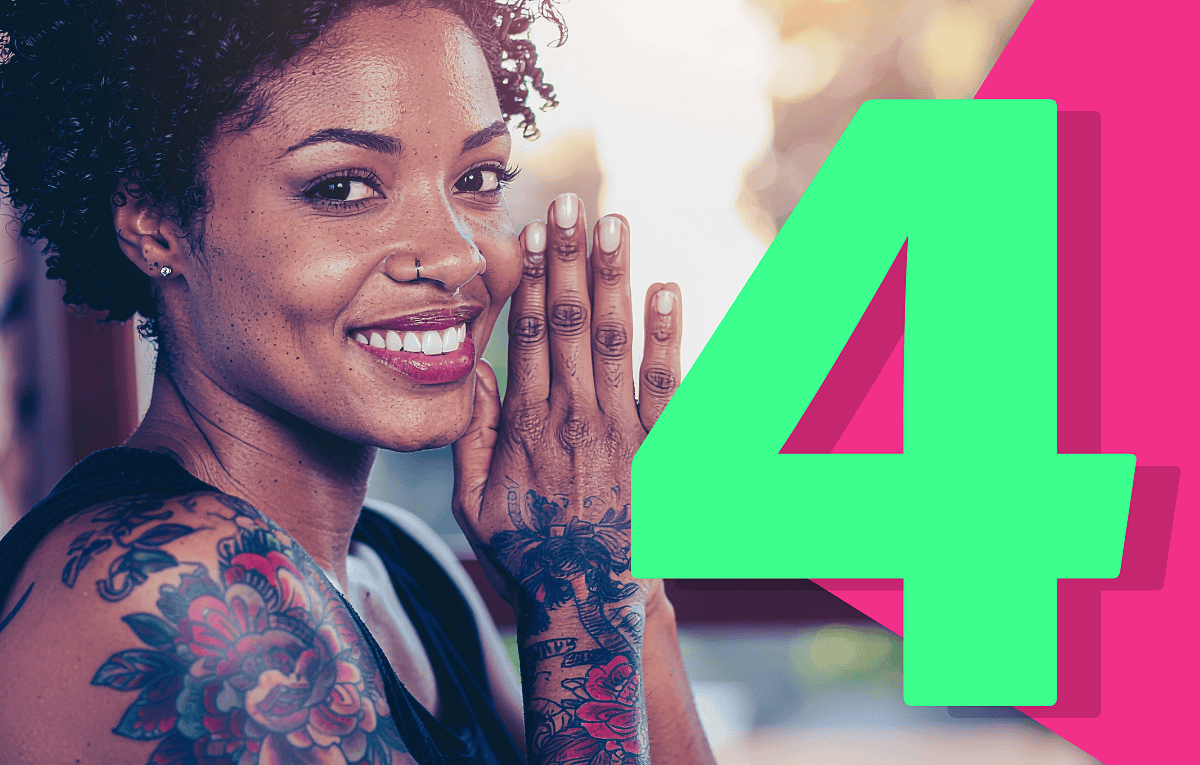The evolution of AI-generated art has just hit a major milestone — and Adobe is once again leading the charge. With the launch of Firefly Image Model 4 and its even more powerful sibling, Firefly Image Model 4 Ultra, Adobe is setting a new gold standard for what’s possible with AI creativity. These models, unveiled at Adobe MAX London 2025, don’t just push the boundaries of photorealism — they completely redraw them.
Image Credit: Adobe
Building on the success of earlier versions, Firefly Image Model 4 introduces faster generation speeds, 2K high-resolution outputs, and an unprecedented level of creative control. Meanwhile, the Ultra version caters to those who demand the absolute best: hyper-detailed scenes, natural human features, rich architectural detail, and more. Together, they mark a turning point not only for professional creatives but also for anyone looking to harness the power of AI to bring their imagination to life.
Unmatched Realism and Detail
Unlike early AI art tools, which often stumbled with anatomy, texture, and composition, Firefly Image Model 4 delivers a new caliber of output. It shines particularly in:
- Human Portraits: Realistic skin textures, natural hair flow, and convincing expressions
- Architectural Scenes: Fine building details, correct material lighting, and perspective accuracy
- Animals and Nature: Intricate fur textures, realistic foliage, and dynamic environmental lighting
The Firefly 4 Ultra model takes it a step further, offering deep scene understanding and the ability to render complex interactions between objects and characters with near-photographic fidelity.
A New Era of Prompt Control
One of the most transformative upgrades in Firefly Image Model 4 is enhanced prompt fidelity. Descriptions are now interpreted with a nuance that rivals human creative intuition. Artists can write more specific prompts — detailing styles, moods, objects, and layouts — and see results that closely mirror their vision.
Adobe also introduced new creative tools like:
| Feature | What It Does |
|---|---|
| Style Selection | Customize output by applying pre-defined visual styles (e.g., watercolor, cinematic lighting) |
| Composition Matching | Maintain specific object placements or framing from prompt to output |
| Visual Intensity Slider | Adjust the realism-vs-stylization balance of an image |
These tools not only empower professional artists but also democratize high-quality image generation for beginners and hobbyists.
Fully Integrated with the Creative Cloud Workflow
Adobe understands that professional artists need seamless workflows. Firefly Image Model 4 is tightly woven into apps like Photoshop and Premiere Pro, allowing users to generate, edit, and integrate AI-created content without breaking stride.
- Photoshop Integration: Instantly generate backgrounds, remove or add objects, or create unique design assets.
- Premiere Pro Integration: Extend video scenes, create dynamic backgrounds, and generate storyboard visuals at 4K quality.
This means AI is no longer a separate tool — it’s embedded directly into the creation process, saving time while supercharging creativity.
Two Models, Tailored for Different Needs
Adobe is wisely offering two tiers to meet different creative needs:
| Model | Best For | Key Strengths |
|---|---|---|
| Firefly Image Model 4 | Everyday creative work | Fast generation, high-quality visuals for concept art, marketing, design |
| Firefly Image Model 4 Ultra | High-end professional work | Top-tier realism for portraits, hyper-detailed scenes, polished final outputs |
This flexibility gives users the choice between speed for brainstorming and polish for professional-grade production.
Commercial Safety and Ethical AI Training
Adobe continues to prioritize commercial use readiness. Firefly Image Model 4 is trained on licensed Adobe Stock images, public domain content, and openly licensed material — avoiding the copyright controversies plaguing some competitors. This means that creators can confidently use Firefly-generated images in professional, commercial projects without fear of legal repercussions.
By contrast, some other AI art generators remain mired in lawsuits and questions about improper dataset sourcing, giving Adobe a major credibility advantage among enterprise users and creative agencies.
Expansion Beyond Adobe: Integrating Third-Party AI Models
In a bold and industry-defining move, Adobe is opening Firefly to include third-party AI models. This means users can tap into:
- OpenAI’s GPT-4o Visual: Exceptional for text rendering inside images (perfect for posters, UI mockups)
- Google’s Imagen 3: Best-in-class photorealistic generation for ultra-lifelike outputs
- Google’s Veo 2: Advanced video generation capabilities (coming soon)
By offering access to these engines within the Firefly ecosystem, Adobe positions itself as not just a tool provider — but a creative platform.
Introducing Firefly Boards and Text-to-Vector Tools
Firefly isn’t stopping at image generation:
- Firefly Boards: Collaborative, AI-powered moodboarding where teams can co-create and iterate on ideas visually.
- Text-to-Vector: Generate editable vector graphics directly from text prompts — ideal for scalable branding, logos, and illustrations.
This not only strengthens Adobe’s presence in visual creation but also pushes into areas like design collaboration and branding that were previously dominated by traditional vector programs.
Firefly Goes Mobile: Creativity Anytime, Anywhere
Adobe also announced a Firefly Mobile App coming later this year for both iOS and Android. Creatives will soon be able to generate images, vectors, and even short video clips right from their phones or tablets, further blurring the line between desktop-grade creativity and mobile convenience.
Adobe Is Leading the Future of Digital Art
Adobe Firefly Image Model 4, with all its upgrades, integrations, and ethical safeguards, is not just an update — it’s a complete reimagining of what creative AI can be. By combining speed, control, realism, commercial safety, and cross-platform integration, Adobe is reshaping the landscape for digital creators everywhere.
As AI continues to redefine art and design, Adobe isn’t chasing trends — it’s setting them.
Understanding Generative AI in Adobe’s Ecosystem
Adobe Firefly is changing the way people create digital art in 2025. This free online tool lets anyone generate images from simple text descriptions, making artistic creation accessible to everyone. Adobe’s AI image generator transforms basic text prompts into stunning visual content without requiring any design skills or expensive software.
The latest version of Firefly now includes Image 4 model technology, offering more precise results and diverse artistic styles. Users can also transform existing photos into different art styles with the image-to-image feature. This versatility makes it useful for both personal projects and commercial work, as Adobe ensures all generated content is safe for commercial use.
Adobe has integrated generative AI technology into its creative suite, transforming how designers and artists work. These tools learn from existing content to create entirely new images, text effects, and designs that didn’t exist before.
The Role of Generative AI in Image Creation
Generative AI in Adobe’s ecosystem works by analyzing patterns in existing data, then creating new content based on what it learned. Unlike traditional editing tools that modify existing elements, generative AI can produce completely original visuals.
When users type a text prompt like “sunset over mountains with purple sky,” the AI processes this request and generates a relevant image. This technology eliminates repetitive manual tasks that once took hours.
The system understands context, style, and composition, making it valuable for both professional designers and beginners. Adobe’s implementation ensures these tools complement human creativity rather than replace it.
Key benefits include:
- Faster content creation
- More design iterations in less time
- Ability to visualize concepts quickly
- Reduced technical barriers for new creators
Adobe Firefly: A New Frontier
Adobe Firefly stands as the company’s flagship generative AI tool for creating AI-generated artwork. It empowers users to produce unique images simply by typing descriptive text.
Firefly was built specifically for creative professionals who need to generate custom content at scale. The platform allows business users to maintain brand consistency while producing varied assets for different campaigns and channels.
What sets Firefly apart is its integration with Adobe’s existing creative applications. This creates a seamless workflow where AI-generated elements can be further refined using familiar tools.
Users can:
- Generate images from text descriptions
- Create variations of existing designs
- Produce content that matches specific brand guidelines
- Explore creative concepts without extensive technical skills
How to Generate Images with Adobe’s AI
Adobe’s AI image generation tools offer a streamlined process for creating custom visuals using simple text prompts. These powerful features are available in both Adobe Express and Photoshop, making creative exploration accessible to everyone regardless of design experience.
Starting with a Text Description
To begin generating images with Adobe’s AI, users should first access the feature through Adobe Express or Photoshop. In Adobe Express, select “Generate with AI” from the homepage, then choose “Generate image.”
The text description is the foundation of AI image creation. Users should write clear, detailed prompts that specify:
- Subject matter (person, landscape, object)
- Style (photorealistic, cartoon, watercolor)
- Lighting conditions and mood
- Color palette preferences
For example, instead of typing “beach,” try “sun-drenched tropical beach with turquoise waters and white sand at sunset.” More specific descriptions yield better results.
Adobe’s AI understands natural language, so users can experiment with different prompt variations to refine their outputs. The system generates multiple options from a single prompt, allowing users to select the most suitable result.
Refining Images with Reference Images and Textures
Adobe’s AI allows users to upload reference images that guide the generation process. This feature helps achieve more consistent results that match a specific visual style or brand identity.
To use reference images:
- Select the “Reference” option in the generation interface
- Upload an image that represents the desired style
- Adjust the influence level of the reference on the final output
Textures can be incorporated similarly to add depth and character to generated images. Users might specify textures like:
- Rough canvas
- Smooth metal
- Grainy film
- Watercolor paper
Adobe’s AI can blend these texture references with the generated content for more authentic-looking results. This is particularly useful when creating images that need to match existing design elements or maintain consistency across multiple pieces.
Editing and Composition for Final Touches
Once the initial image is generated, Adobe provides tools to refine the composition and make detailed edits. In Adobe Express, users can access basic editing features directly after generation.
For more advanced editing, generated images can be seamlessly transferred to Photoshop. Here, users can:
- Adjust colors and lighting
- Remove or replace elements
- Refine details and textures
- Combine multiple generated images
Composition adjustments might include cropping for better framing, adjusting the rule of thirds, or creating focal points. These refinements help transform raw AI-generated content into polished, professional visuals.
Adobe’s AI also supports generative fill and expand features, allowing users to extend images beyond their original boundaries or replace specific elements while maintaining visual consistency.
Exploring the Features and Styles of AI-Generated Images
Adobe’s AI image generator offers a robust set of features that enable users to create diverse visual content through simple text prompts. The tool’s versatility allows for various artistic expressions, from photorealistic images to stylized illustrations.
Style Options: From Realism to Abstract
Adobe Firefly provides numerous style options that cater to different creative needs. Users can generate highly detailed realistic images that mimic photography or explore more artistic interpretations.
The platform offers preset styles including:
- Photorealistic: Creates images with lifelike details and lighting
- Cinematic: Produces dramatic visuals with movie-like quality
- Anime/Manga: Generates illustrations in Japanese animation style
- Watercolor: Mimics traditional watercolor painting techniques
- Pop Art: Creates bold, vibrant images inspired by the pop art movement
Style intensity can be adjusted to control how strongly the selected style influences the final output. This flexibility helps users achieve the exact visual aesthetic they need for their projects.
The AI understands complex style descriptions, allowing creators to combine multiple influences in a single prompt.
Incorporating 3D and Neon Effects
The AI image generator excels at creating dimensional elements and special effects that would be time-consuming to produce manually.
3D capabilities allow users to generate images with:
- Depth and perspective
- Realistic shadows and highlights
- Textured surfaces that appear tangible
Neon effects produce striking visuals with glowing elements that mimic illuminated signage or futuristic lighting. These effects work particularly well for:
- Urban nightscapes
- Retro-futuristic compositions
- Logo designs with illuminated components
Combining 3D elements with neon creates compelling depth in otherwise flat compositions. The AI handles complex lighting scenarios effectively, calculating how illuminated elements would cast light on surrounding objects.
Users can specify material properties like reflectivity, transparency, and texture to enhance the realism of 3D elements.
Generative Fill and Text Effects
Generative Fill revolutionizes image editing by intelligently adding or expanding elements based on the existing composition. This feature helps users:
- Extend backgrounds seamlessly
- Add new objects that match the image style
- Remove unwanted elements with content-aware replacement
The tool analyzes the context to ensure additions blend naturally with the original image.
Text effects transform ordinary typography into artistic elements. Users can create:
- Text that appears to be made of various materials (metal, glass, wood)
- Words integrated with environmental elements
- Typography with special effects like fire, water, or neon illumination
The AI understands how text should interact with other image components. For instance, text placed on a wall will conform to the perspective and texture of that surface.
Both features save significant time compared to traditional editing methods while producing professional-quality results.
Pricing and Accessibility
Adobe offers various pricing options for its AI image generation tools, making them available to different users with different needs. The pricing structure balances features with cost considerations.
Understanding Plans and Pricing
Adobe Firefly, the company’s AI image generator, comes in multiple tiers. The free version provides users with 7,000 monthly generative credits and unlimited access to standard features like Text to Image and Generative Fill. This makes it accessible for casual users or those wanting to test the technology.
For more serious users, Adobe offers Firefly Pro at $29.99 per month. This premium option is currently available at an early access price that ends April 28. Users should consider upgrading if they require more advanced capabilities or higher usage limits.
Adobe Express includes AI image generation features in its plans as well. The premium version provides 250 generative credits monthly per user. These credits support AI features designed to be commercially safe.
Free Trial: Getting Started with Adobe AI
Adobe makes it easy for new users to explore its AI image generation capabilities through free trials. This approach allows people to test the technology before committing financially.
The free version of Firefly serves as an entry point for many users. With its generous 7,000 monthly credits, it provides substantial capacity to create AI-generated images without any cost.
This strategy helps users on tight budgets access necessary tools without financial strain. The company’s approach of offering a completely free tier starting at $0 makes the technology more accessible to students, hobbyists, and small businesses.
Users can transition to paid plans after experiencing the value of the AI tools firsthand. This try-before-you-buy approach builds confidence in the product’s capabilities.
Frequently Asked Questions
Adobe offers several AI image generation tools that have unique features and capabilities. Here are answers to common questions about Adobe’s AI offerings, requirements, and how they compare to other options in the market.
How does the Adobe AI image generator differ from other AI image generation tools?
Adobe’s AI image generators like Firefly are specifically designed to integrate with Adobe’s ecosystem of creative apps. This creates a more seamless workflow for existing Adobe users compared to standalone AI image generators.
Adobe has trained its AI models on licensed content, making them more commercially safe. This means images created with Adobe Firefly can be used for commercial purposes without the same copyright concerns as other AI image tools.
Unlike some competitors, Adobe’s tools focus on giving users precise control over generated images. They allow for targeted editing and refinement rather than just creating entire images from scratch.
What features does Adobe Firefly offer for creating AI-generated images?
Firefly offers text-to-image generation that lets users create images by typing descriptive prompts. The system understands detailed instructions about style, content, and composition.
It includes specialized features like Generative Fill and Generative Expand in Photoshop. These tools help users add or extend content in existing images while maintaining a consistent style.
Firefly provides vector generation capabilities, allowing users to create scalable graphics that can be edited in Adobe Illustrator. It also offers style transfer features that can apply artistic styles to existing images.
Are there any no-cost options for using Adobe AI image generation software?
Adobe offers a limited free tier for Firefly that includes a certain number of generative credits. These credits refresh monthly and allow new users to try the technology without paying.
Adobe Express includes some AI image generation features in its free plan. This provides basic access to text-to-image and simple editing capabilities without a subscription.
The free options have limitations on usage volume and some premium features require paid plans. Commercial usage rights may also be restricted in the free versions.
How can creators best utilize AI tools like Adobe Express for enhancing photos?
Creators can use Adobe Express AI tools to remove backgrounds with a single click. This saves time compared to manual selection and masking techniques.
The text-based editing features allow for quick image adjustments through simple prompts. Users can request changes like “make the sky more dramatic” without manual editing.
Combining AI generation with traditional editing techniques produces the best results. Starting with AI-generated elements and then refining them with manual adjustments leads to more unique and polished images.
Which AI image generator is most popular for professional image creation and editing?
Adobe Firefly has quickly become popular among professionals already using the Adobe Creative Cloud suite. Its integration with Photoshop and Illustrator makes it valuable for established workflows.
Professional photographers and designers often prefer Adobe’s AI tools because of the commercial usage rights. The licensing clarity provides peace of mind for client work.
The professional community values Adobe’s commitment to ethical AI training practices. Many professionals choose Adobe tools knowing the AI models were trained on properly licensed content.
What are the system requirements for running Adobe’s AI-based image generation software?
Most of Adobe’s AI image generation happens in the cloud, requiring only a stable internet connection. This means even computers with modest specifications can use the tools effectively.
For optimal performance with local processing features, Adobe recommends at least 8GB of RAM and a modern multi-core processor. Graphics-intensive tasks benefit from dedicated GPUs.
The web-based versions of Adobe Firefly and Express work in modern browsers on both Windows and Mac. Mobile apps are available for iOS and Android devices, though they may offer fewer features than desktop versions.







